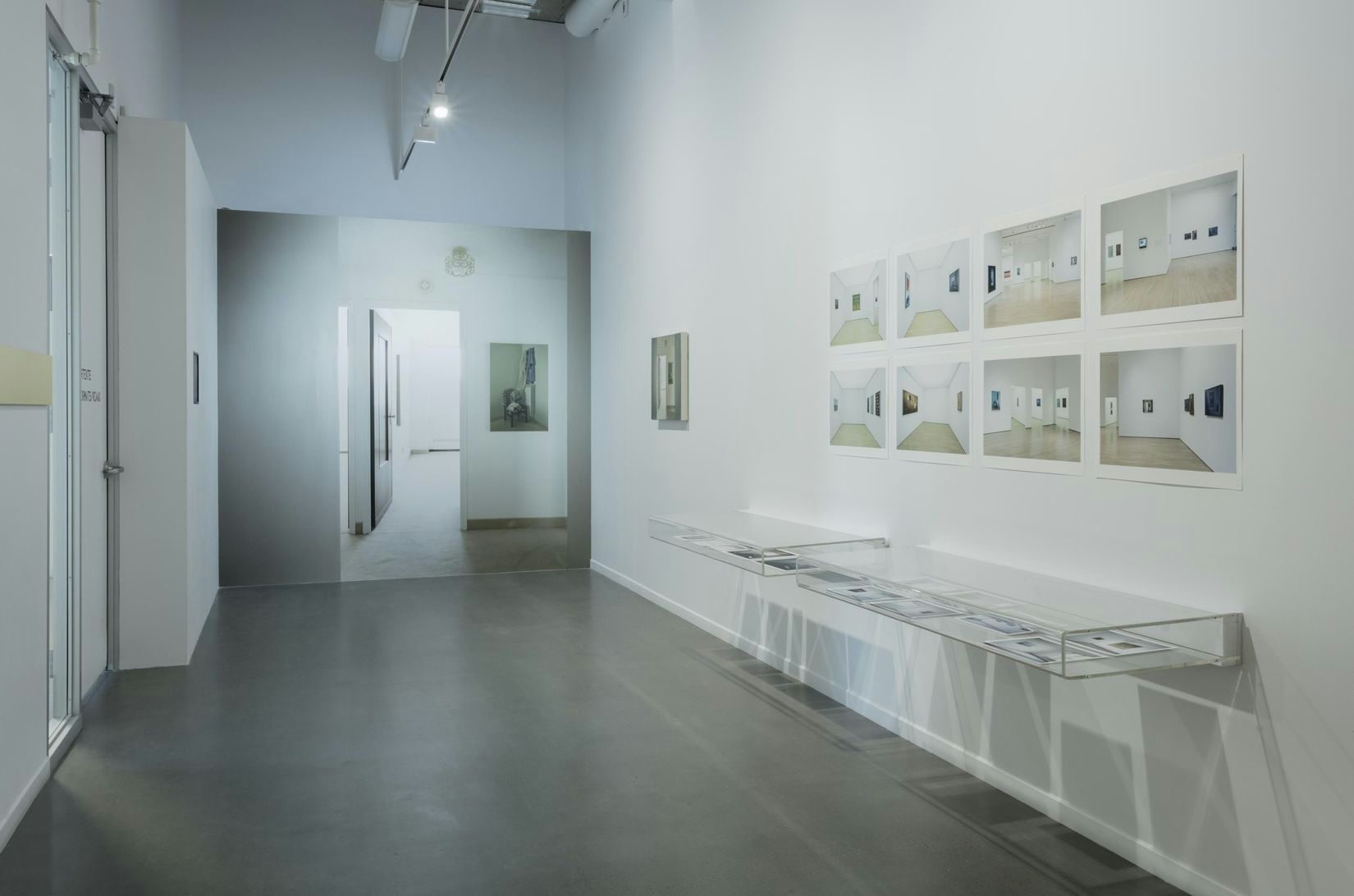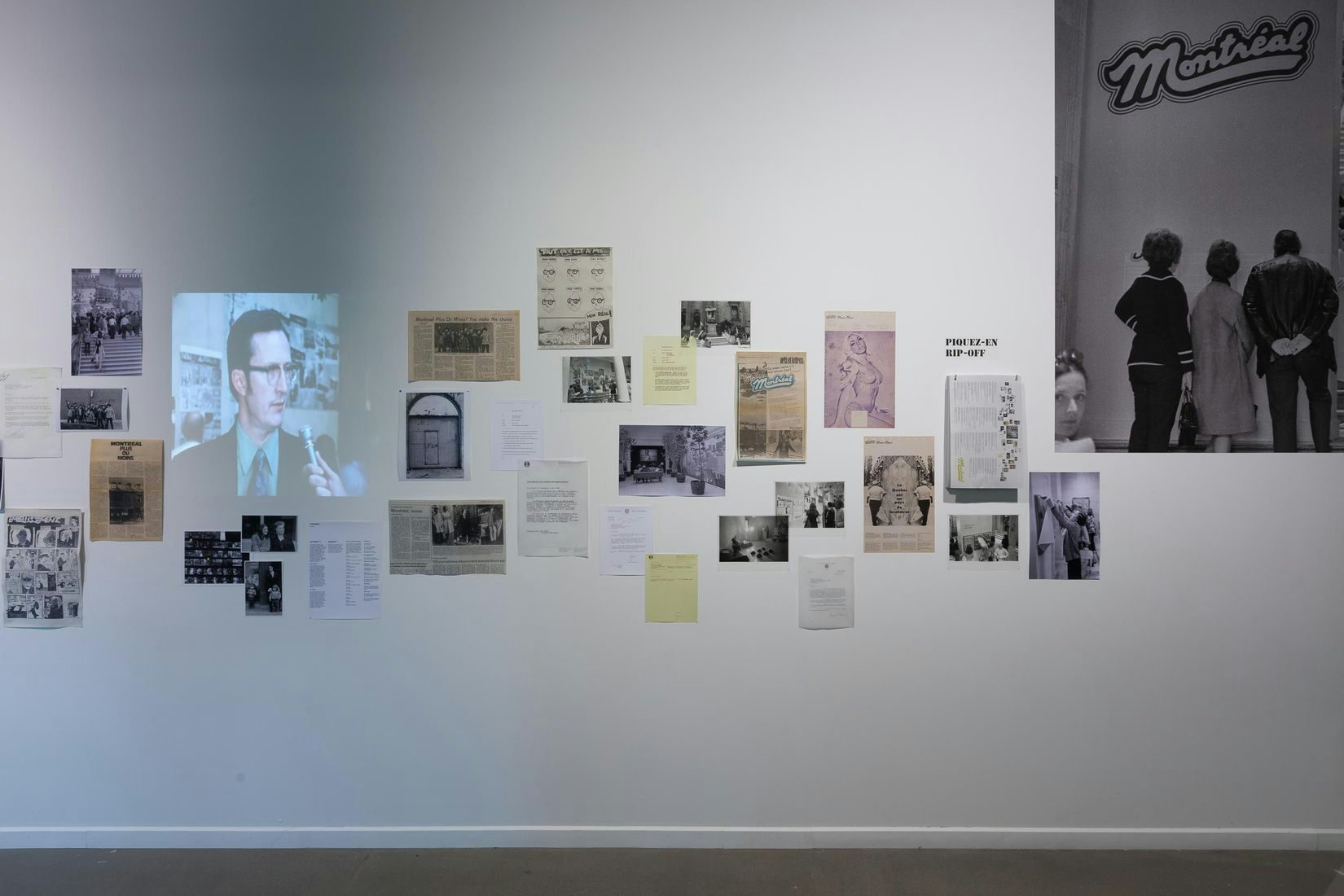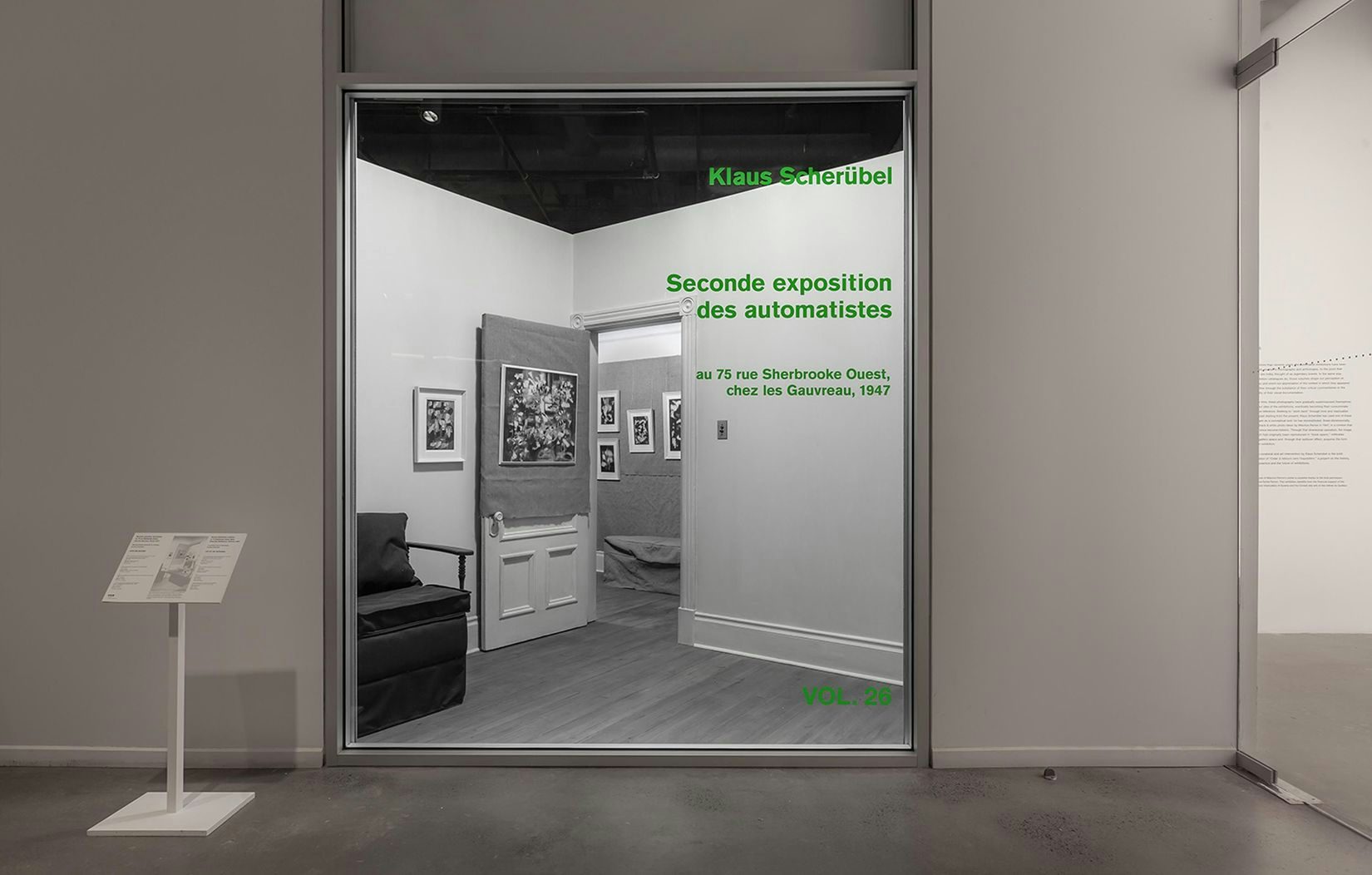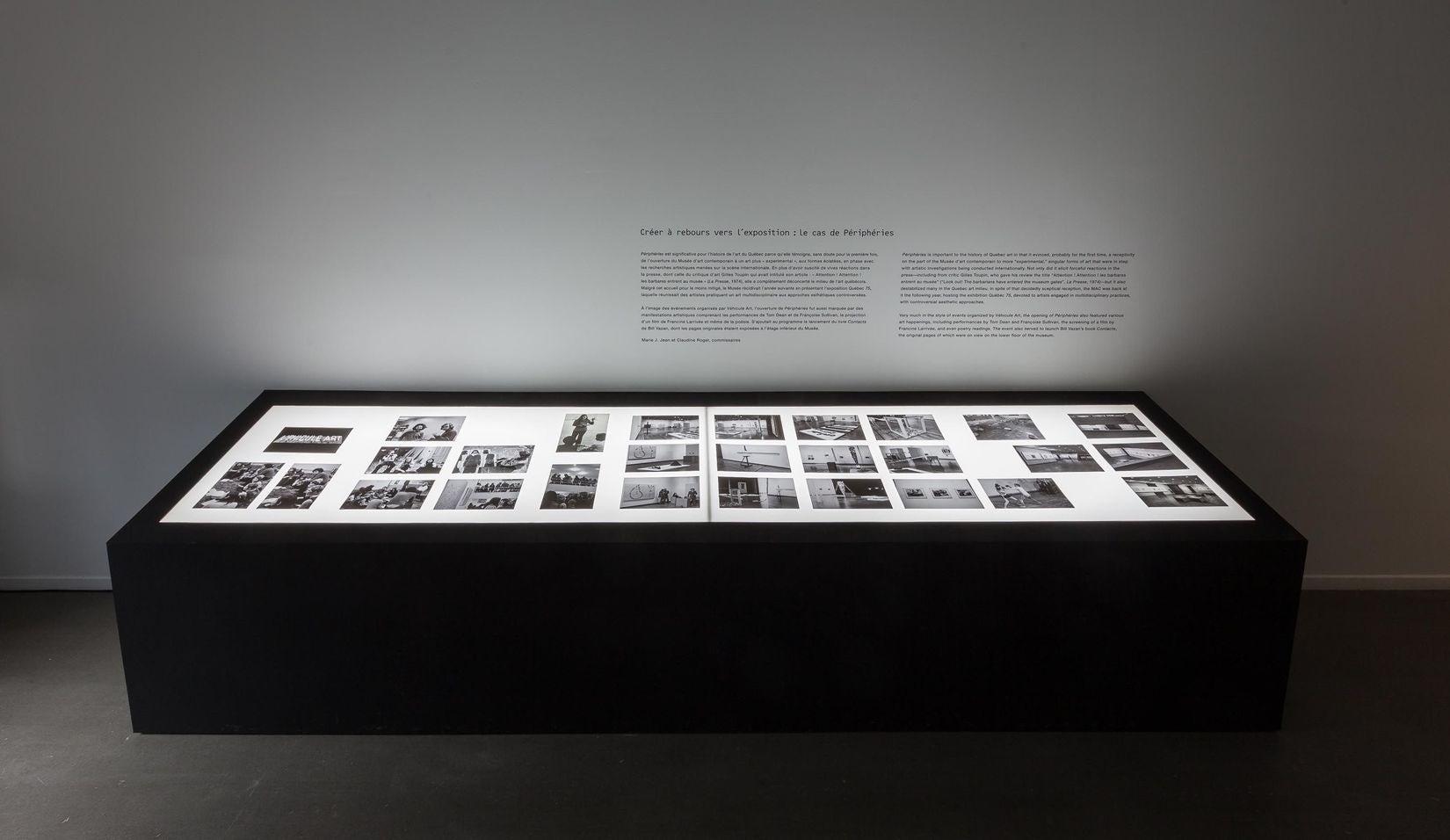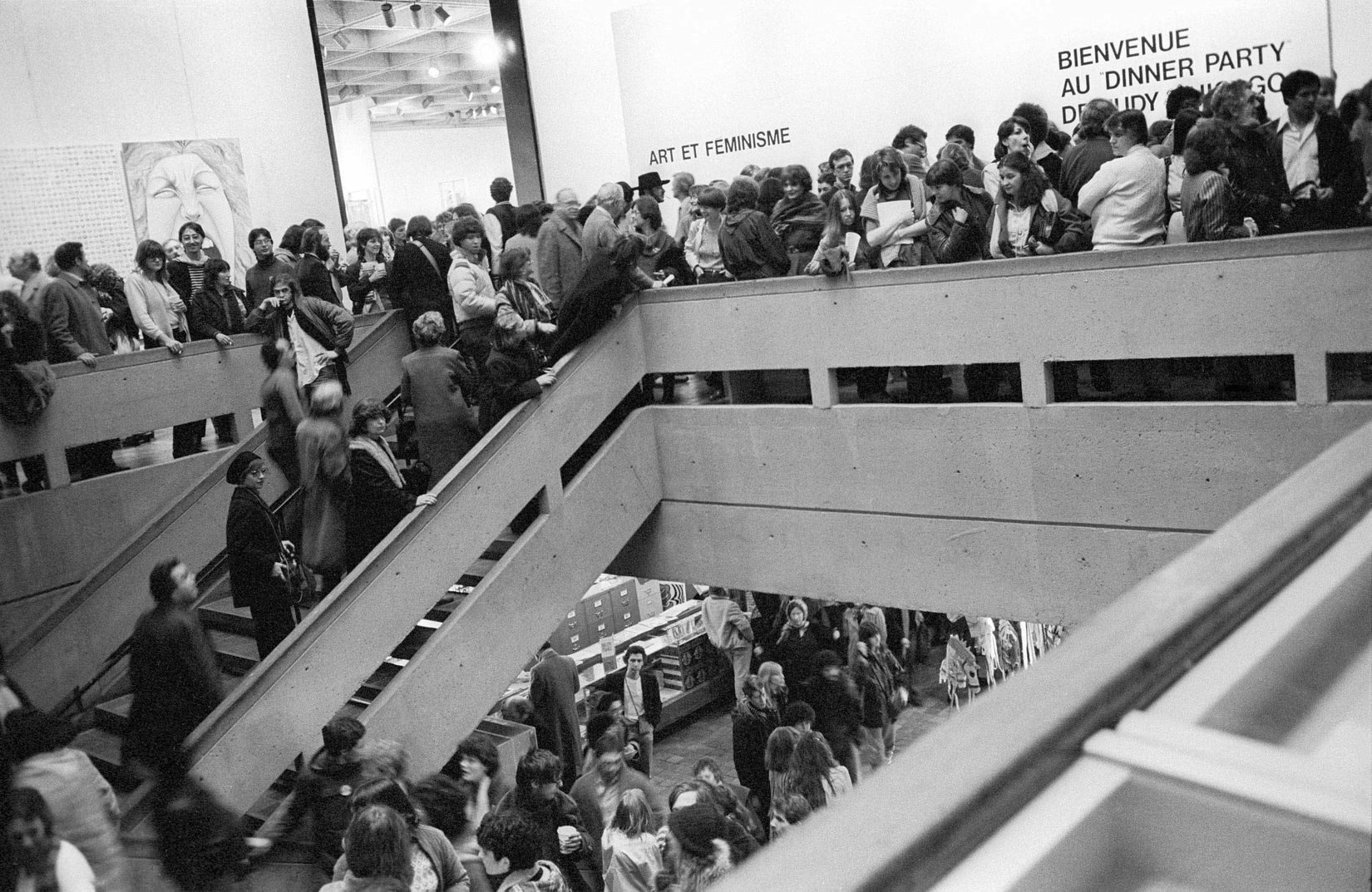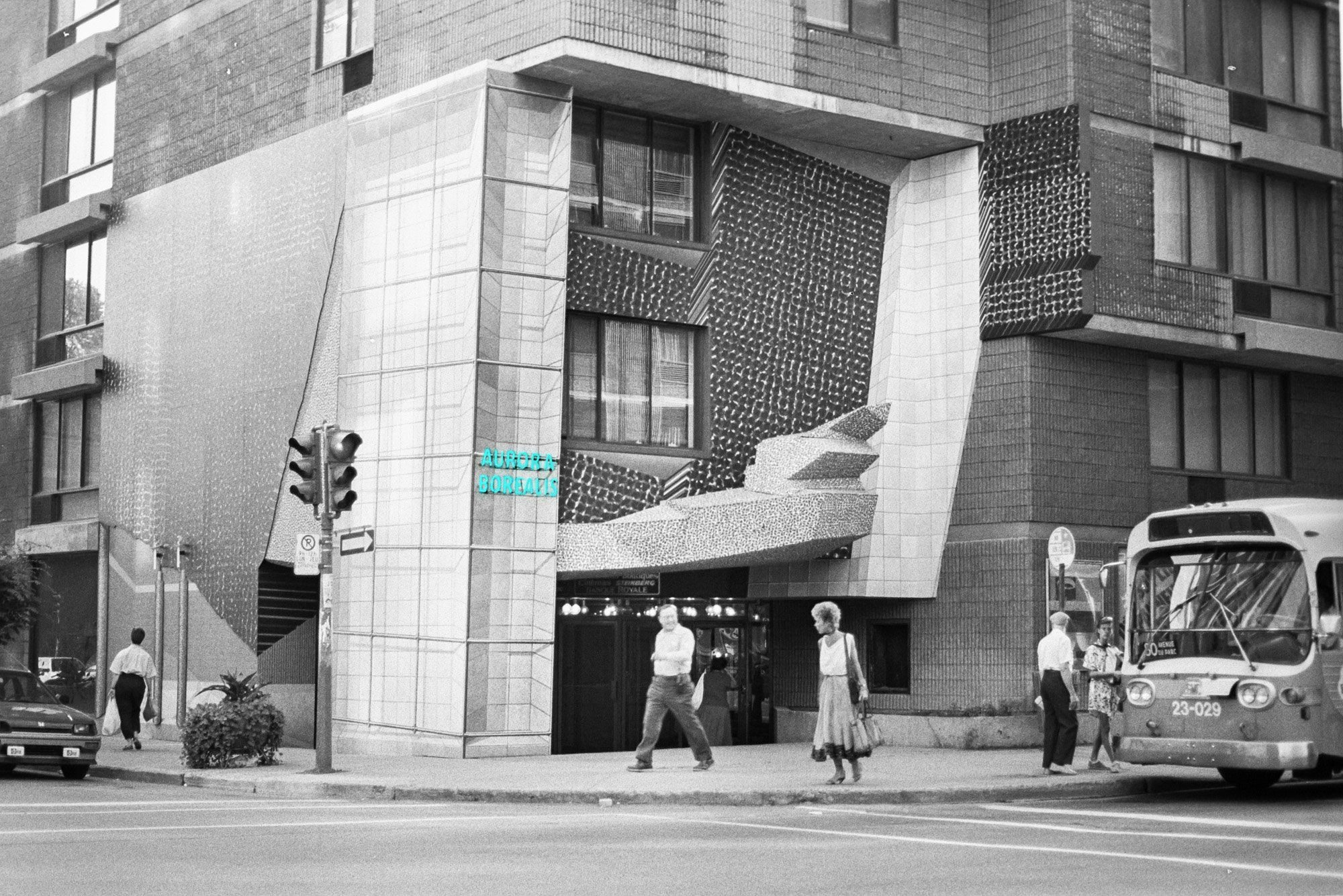
“Créer à rebours vers l’exposition”
The case of Aurora Borealis
2016.11.18 -2017.03.18
- Notes
Aurora Borealis (1985)
First exhibition of the Centre international d’art contemporain de Montréal, presented from June 15 to September 30, 1985 at Place du Parc, 3575 avenue du Parc in Montreal.
Artists: Robert Adrian, Jocelyne Alloucherie, Geneviève Cadieux, Ian Carr-Harris, Melvin Charney, Robin Collyer, Tom Dean, Pierre Dorion, Andrew Dutkewych, Gathie Falk, Michael Fernandes, Vera Frenkel, General Idea, Raymond Gervais, Betty Goodwin, Pierre Granche, Noel Harding, Liz Magor, John Massey, John McEwen, Allan McWilliams, Claude Mongrain, Rober Racine, Henry Saxe, Michael Snow, David Tomas, Renée Van Halm, Jeff Wall, Irene Whittome, and Krzysztof Wodiczko.
Curators: René Blouin, Claude Gosselin, and Normand Thériault
MARIE J. JEAN ET CLAUDINE ROGER
“In conceptualizing and presenting an installation, the artist is simultaneously part of a curious phenomenon: they agree to be included in an imaginary history of art. Not that of Malraux’s musée imaginaire, but that of their own works, which, unfortunately for them, become truly imaginary.”1 That history, Rober Racine argues, consists in comments about the works that are forever subject to re-actualization through critical discourse based on their documentation. For the works, in the form of ephemeral exhibitions, will eventually be only vague memories serving to nurture that discourse. Thus, the artist writes with regret, they are reduced to publicly performing their own disappearance, because all that will subsist are the images, words and recollections of what they were when they were shown.
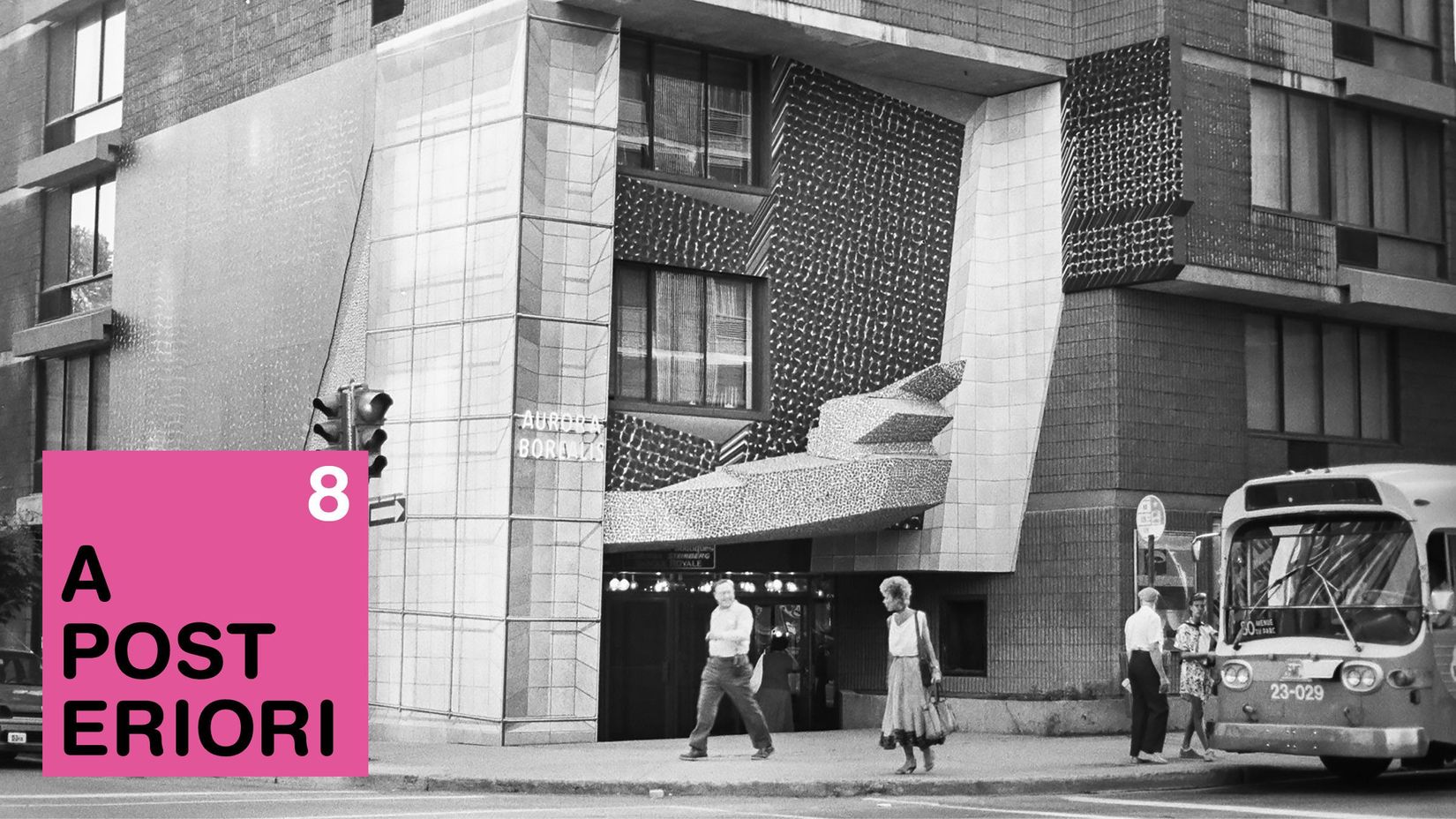
While it is true that the installation was, from its beginnings, seen as an ephemeral practice and intrinsically linked to the space in which it was formulated, history is seemingly at odds with Racine, given that artists and exhibition curators, hewing to the constraints of conservation and merchandization, have re-installed, re-activated, re-constituted and re-exhibited various works. Today, in hindsight, we can state that the installation has had a future. Our intent is to review that history via a case study of Aurora Borealis, an emblematic exhibition in Quebec art history organized by René Blouin, Claude Gosselin and Normand Thériault, who in 1985 invited 30 Canadian artists to mount installations for a period of 100 days, as an exercise in reflection on contemporary art.
This first-ever documentary exhibition dedicated to Aurora Borealis is the first step in a far-reaching research project by VOX on the history and the future of exhibitions in Quebec, which we plan to conduct until 2020. Exhibition view images will constitute an essential component of this project, with the goal of raising a number of correlative questions: what uses are such images in the research, practice and history of exhibitions? How does imaging, which is a broad subject of the exhibition, influence art practice, dissemination and theory? How have documentarists gradually come to consider the context and institutional framework contributing to the presentation of works? At what point did exhibition views appear in publications? How is this documentary material used today to establish historical and narrative relations in an exhibition? And how does it inform artists’ self-critical thinking?
We therefore seek, as Rober Racine stipulated, to study in reverse this exemplary exhibition, based on its documentation, produced by Denis Farley, Paul Gauvin and the artists, on its accompanying publication, and on the multiple accounts that have constructed its narrative over more than thirty years. We will trace the multiple re-activations of Aurora Borealis so as to better understand how accounts of it have taken form. For, as François Dosse has rightly argued: “All discourse about an event conveys, connotes a series of prior events, which lends full importance to the discursive web that connects them in the implementation of a plot.”2 And if that plot extends itself thusly, it is because it is the projection of a remembered future, still in the process of being mapped out.
VOX wishes to thank for their precious contribution René Blouin, Vincent Bonin, Geneviève Cadieux, Pierre Dorion, Denis Farley, Paul Gauvin, Claude Gosselin, Angela Grauerholz, Lesley Johnstone, Dominique Mousseau, Rober Racine, Normand Thériault, David Tomas, as well as the Centre international d’art contemporain de Montréal, CIBL, the Musée d’art contemporain de Montréal and Videographe.
View the exhibition catalog
Aurora Borealis (1985) on the CIAC website.


